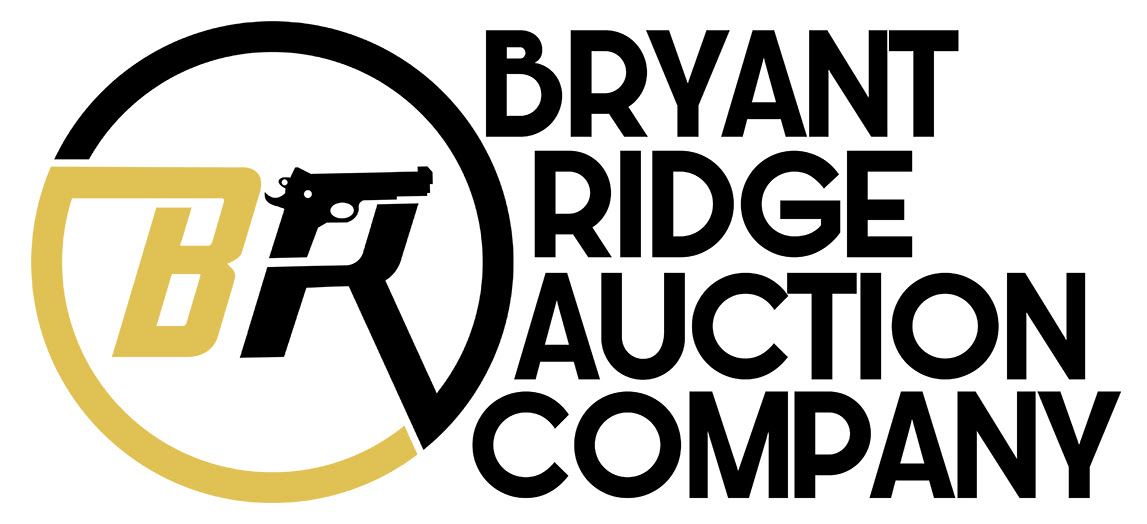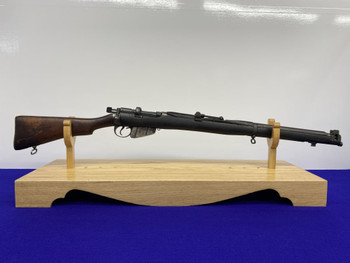Description

Item Description
Bryant Ridge Auction Company is pleased to present this historical bolt-action rifle today for a penny-start auction, this is the Lithgow Small Arms Factory SHT.LE III*!
SPECIFICATIONS:
Manufacturer: Lithgow Small Arms Factory
Model: SHT.LE III*
Serial: A71463
Date of Manufacture: 1920
Caliber: .303 British
Finish: Blue
Barrel Length: 25 1/4"
Optics/Sights: Winged protected blade front with Adjustable escalator rear
Stock/Grips: Smooth Walnut
Action: Bolt-Action
Markings: Standard / The plate above the trigger guard is stamped with an "A" in a star, which is above a shield with "Lithgow SHT.LE III*" inside and the date 1920 below.
Bryant Ridge's Analysis:
The best-known Lee–Enfield rifle, the SMLE Mk III, was introduced on 26 January 1907, along with a Pattern 1907 bayonet, and featured a simplified rear sight arrangement and a fixed, rather than a bolt-head-mounted sliding, charger guide. The design of the handguards and the magazine were also improved, and the chamber was adapted to fire the new Mk VII high-velocity spitzer .303 ammunition. Many early models, Magazine Lee–Enfields (MLEs), Magazine Lee–Metfords (MLMs), and SMLEs, were rebuilt to the Mk III standard. These are called "Mk IV Cond.", with various asterisks denoting subtypes.
During the First World War, the SMLE Mk III was found to be too complicated to manufacture, and demand outstripped supply; in late 1915, the Mk III* was introduced, incorporating several changes, the most prominent of which were the deletion of the magazine cut-off mechanism, which when engaged permits the feeding and extraction of single cartridges only while keeping the cartridges in the magazine in reserve, and the long-range volley sights. The windage adjustment of the rear sight was also dispensed with, and the cocking piece was changed from a round knob to a serrated slab.
Rifles with some or all of these features present are found, as the changes were implemented at different times in different factories and as stocks of parts were depleted. The magazine cut-off was reinstated after the First World War ended, and not entirely dispensed with in manufacturing until 1933; some rifles with cut-offs remained into the 1960s. The inability of the principal manufacturers (RSAF Enfield, the Birmingham Small Arms Company Limited and London Small Arms Co. Ltd) to meet military production demands led to the development of the "peddled scheme", which contracted out the production of whole rifles and rifle components to several shell companies.
The SMLE Mk III* (renamed Rifle No.1 Mk III* in 1926) saw extensive service throughout the Second World War, especially in the North African, Italian, Pacific, and Burmese theatres in the hands of British and Commonwealth forces. Australia and India retained and manufactured the SMLE Mk III* as their standard rifle during the conflict, and the rifle remained in Australian military service through the Korean War until the L1A1 SLR replaced it in the late 1950s. The Lithgow Small Arms Factory finally ceased production of the SMLE Mk III* in 1953.
Return Policy:
We gladly offer a 3 day unfired inspection policy from the time that the firearm is delivered to your FFL. Refunds are available for all qualifying orders.
Model: SHT.LE III*
Serial: A71463
Date of Manufacture: 1920
Caliber: .303 British
Finish: Blue
Barrel Length: 25 1/4"
Optics/Sights: Winged protected blade front with Adjustable escalator rear
Stock/Grips: Smooth Walnut
Action: Bolt-Action
Markings: Standard / The plate above the trigger guard is stamped with an "A" in a star, which is above a shield with "Lithgow SHT.LE III*" inside and the date 1920 below.
Bryant Ridge's Analysis:
The best-known Lee–Enfield rifle, the SMLE Mk III, was introduced on 26 January 1907, along with a Pattern 1907 bayonet, and featured a simplified rear sight arrangement and a fixed, rather than a bolt-head-mounted sliding, charger guide. The design of the handguards and the magazine were also improved, and the chamber was adapted to fire the new Mk VII high-velocity spitzer .303 ammunition. Many early models, Magazine Lee–Enfields (MLEs), Magazine Lee–Metfords (MLMs), and SMLEs, were rebuilt to the Mk III standard. These are called "Mk IV Cond.", with various asterisks denoting subtypes.
During the First World War, the SMLE Mk III was found to be too complicated to manufacture, and demand outstripped supply; in late 1915, the Mk III* was introduced, incorporating several changes, the most prominent of which were the deletion of the magazine cut-off mechanism, which when engaged permits the feeding and extraction of single cartridges only while keeping the cartridges in the magazine in reserve, and the long-range volley sights. The windage adjustment of the rear sight was also dispensed with, and the cocking piece was changed from a round knob to a serrated slab.
Rifles with some or all of these features present are found, as the changes were implemented at different times in different factories and as stocks of parts were depleted. The magazine cut-off was reinstated after the First World War ended, and not entirely dispensed with in manufacturing until 1933; some rifles with cut-offs remained into the 1960s. The inability of the principal manufacturers (RSAF Enfield, the Birmingham Small Arms Company Limited and London Small Arms Co. Ltd) to meet military production demands led to the development of the "peddled scheme", which contracted out the production of whole rifles and rifle components to several shell companies.
The SMLE Mk III* (renamed Rifle No.1 Mk III* in 1926) saw extensive service throughout the Second World War, especially in the North African, Italian, Pacific, and Burmese theatres in the hands of British and Commonwealth forces. Australia and India retained and manufactured the SMLE Mk III* as their standard rifle during the conflict, and the rifle remained in Australian military service through the Korean War until the L1A1 SLR replaced it in the late 1950s. The Lithgow Small Arms Factory finally ceased production of the SMLE Mk III* in 1953.
Return Policy:
We gladly offer a 3 day unfired inspection policy from the time that the firearm is delivered to your FFL. Refunds are available for all qualifying orders.
Shipping Details
Handgun Standard Shipping $50.00
Long Gun Standard Shipping $70.00
Any orders placed with magazines that are not compliant with your state, county, or city regulations will not ship with your order.
















